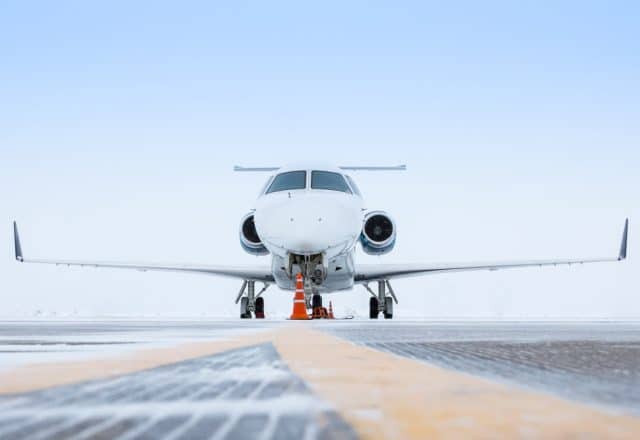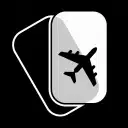The Surprising Facts You Should Know About Cheap Private Jet Flights
When the pandemic sparked a surge in private aviation, more people than ever before started searching for cheap flights on private jets. But, before you go shopping for the cheapest flight options available, there are important safety considerations to keep in mind.
From the cost of a jet charter to safe ways to find affordable flights and what constitutes an illegal air charter, here are six things you should know about cheap private jet flights.
1. How Much Does It Cost to Fly on a Private Jet?
With so many different ways to take to the skies, there isn’t one straight answer to how much it costs to fly on a private aircraft.
Purchasing your own private jet costs millions upfront and comes with sky-high annual maintenance costs and crew fees; fractional ownership brings many of the same costs, and pre-paid jet card programs come with potentially risky capital investments.
Even on relatively cheap private jets, flights cost several thousand dollars per hour. However, there is one private aviation method that empowers you to fly with no upfront costs or annual fees: private jet rentals, better known as an on-demand charter.
2. Is It Cheaper to Rent a Private Jet?
If you’re looking for cheap flights on private jets, on-demand charters are the best place to start your search. Pricing for charter flights varies by aircraft type, time of year, location and availability, but there are ballpark numbers that can help give you a sense of the cost.
For budget-minded private travelers, turboprop planes offer the best rate of about $4,000-$4,900 per hour. Your range and passenger capacity will vary depending on the aircraft you choose, with a plane like the popular Pilatus PC-12 offering room for six and a maximum range of just over 1,800 nautical miles. This combination makes the PC-12 a remarkable choice for private jet charters from New York to Miami or Houston to Las Vegas.
The Beechcraft King Air 350, meanwhile, boasts seating for nine and an impressive range of 2,077 nm.
3. How Much Is the Cheapest Private Jet Flight?
Also known as the “Uber model” of private aviation, buying a seat on a private jet can be a more affordable way to fly. However, there’s a caveat: you aren’t truly flying private. The jet may be the same as those used for private charters, but you share the space with other passengers.
Safety, flexibility and privacy are some of the most important factors when flying private, and all are removed when you share your jet with others. The downsides of this type of flight include:
- Limited or no privacy
- Less space for your bags
- You may not be able to fly with your pets
- Bookings are made based on the operator’s schedule, not yours
In reality, this model has more in common with flying first class than it does with private aviation. For these reasons, we neither sell nor recommend paying for a seat on a private jet.
4. What Is an Empty-Leg Flight?
For the best possible deal on a private jet flight while still maintaining all the benefits that come with a private charter, consider booking an empty-leg flight.
Also known as deadhead flights, empty-leg flights happen when the aircraft must reposition before its next charter. This often happens when a private jet is booked one-way and the aircraft needs to return to its home base to pick up the next passenger.
Flying a private jet without passengers is expensive. To offset the operational costs, many air carriers will offer empty-leg flights at a significantly discounted rate. We’ve seen empty-leg flights that help fliers save as much as 75 percent off the cost of a conventional private jet charter.
Of course, with the incredibly low cost comes a lack of flexibility. You have to fly on the air carrier’s schedule, as they must ensure that the aircraft arrives at its destination on time. But, if you have a flexible itinerary, an empty-leg flight is a great way to experience the luxury of private aviation at a fraction of the cost.
Interested in deadhead flights? Click here to view our list of empty-leg flights that are currently available.
5. What Is an Example of an Illegal Charter?
According to the Federal Aviation Administration or FAA, illegal charters take many forms. One of the most common forms of illegal charter happens when an aircraft owner flies a friend or family member and accepts any form of compensation for the flight. Whether it’s payment for the service or even just money to help offset the cost of fuel, compensation in any form goes against the stringent rules laid out in Part 91.
To operate a charter for hire, the air carrier must hold a valid Part 135 certificate. However, even Part 135 holders can operate illegal charters if they fly beyond their authority.
Part 135 is a complex certificate that helps keep private fliers safe. To learn more about Part 135 and its regulations, read our blog: What You Need to Know About Part 135.
6. What Is the Penalty for Illegal Charter?
Penalties for illegal aircraft charter add up quickly. The FAA levies fines for every flight that has been operated illegally, and yes it works in retrospect. Pilots may also have their licenses revoked and there are even more significant repercussions if an accident occurs on an illegal charter.
When you fly with Stratos, every aircraft, air carrier and crew in our network is thoroughly vetted before each flight. This not only ensures that the charter meets the FAA’s standards under Part 135, but also our safety guidelines that go far beyond those of the FAA.
Want to learn more about how we can help you soar higher with an on-demand charter? Contact our private flight advisors at (888)478-7286 to get started.
Are you ready to book your Austin and Houston charter flight yet?
Our friendly, expert air charter agents are here to answer questions or start your quote today. Don`t wait, call now and we'll get you on your way to your destination!
Call 888-593-9066











